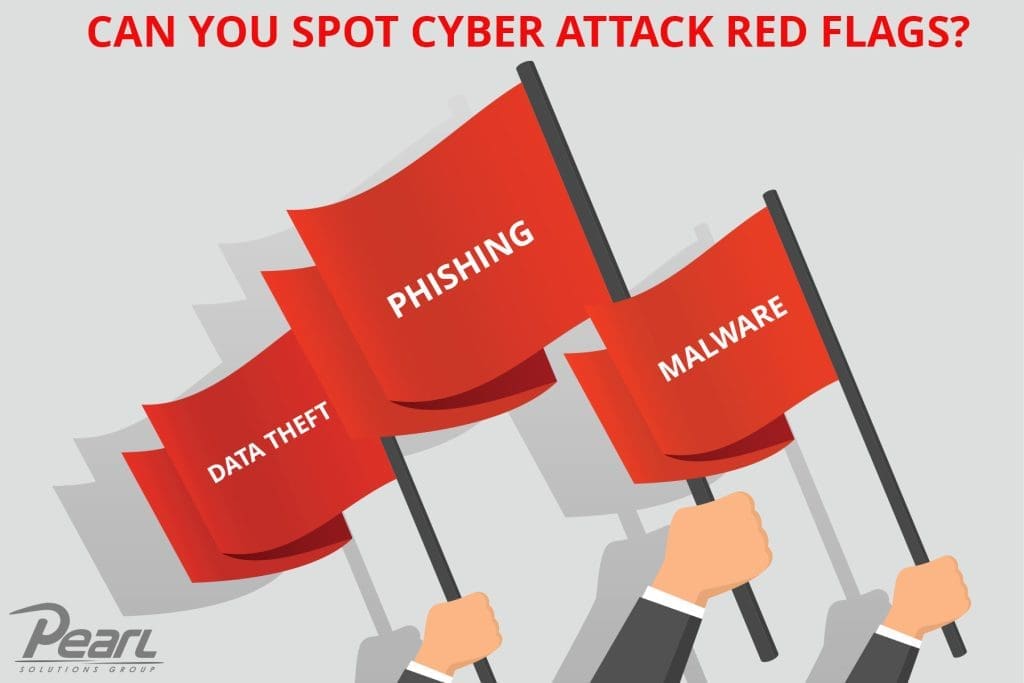

Not all organizations have the enterprise-level resources that offer the most advanced and proactive protection against successful cyber attacks. As an employee, you might not consider yourself a cybersecurity expert, but you have a vital role to play in safeguarding your company’s digital assets. The ability to spot cyber attack red flags is no longer just an IT concern—it’s a shared responsibility.
One of the easiest ways to sneak under your radar is to pretend to be a brand you already know and trust. The most common method is to use phishing attacks where bad actors set up URLs that look nearly identical to the real company’s website. Typically these “click here” link attempts come with some level of urgency like saying there has been unusual activity with your account with that brand, some kind of account verification is needed, or a fake gift card to redeem. Some examples to inspect closely for are:
- Switching out a zero for the letter “O” or a capital “i” for a lowercase “L.” If you’re quickly reading an e-mail, it might look legit.
- Adding in a word that seems like it could be a subdomain of the real company, like “info@googleservice.com.”
- Using a different domain extension, like “info@google.io.”
- Replacing letters with the Cyrillic alphabet:
If you’re not able to spot these red flags but are still concerned with the integrity of the link, it’s best to skip the provided link and instead access your account by navigating to the brand directly within your internet browser.
Another common method of attack is email spoofing. Email spoofing is a tactic used by cybercriminals to make an email appear as though it was sent from a legitimate source when, in reality, it comes from a malicious or deceptive sender. Be aware of email addresses that look similar to legitimate ones but contain slight variations (e.g., john.doe@example.com vs. john.doe@examp1e.com). If you believe the email sender to be legitimate, a bad actor can successfully get you to make purchases, transfer funds, download malware, or engage in other malicious activities. Red flags to look for are similar to those listed for malicious URLs.
Bad Actors frequently use pop-ups to try to trick you into providing information or to unintentionally download malware. While pop-ups can be a legitimate way a brand tries to interact with you, they are also a red flag that needs your critical eye to spot malicious intent. You should inspect any links you may be directing to before you click on them (depending on the platform, that could be hovering over the link, right-clicking, or click + HOLD to inspect the URL destination). It is generally unwise to enter any login or personal information into an unexpected pop-up window. In most legitimate pop-ups, they are a shortcut, so the best practice if you are unable to confirm the validity of the request or destination is to take the long way by navigating yourself through their website to the secure site to enter info or download anything.
Unexpected updates are another cyber attack red flag to look out for. An update attack attempt could lead to malware, phishing, and other malicious software installations. Typically, your IT provider is running all necessary updates behind the scenes or will notify you if an update requires some kind of action from you. If you receive notifications or prompts to install or update software on your computer or device that you didn’t initiate or weren’t expecting, you should NOT proceed and alert IT.
The ability to recognize and respond to red flags is an invaluable skill for employees. By staying vigilant and informed about potential cyber attack indicators like malicious URLs, email spoofing, and unexpected pop-ups or updates, you become a vital part of your organization’s defense against digital threats. Routine security awareness training is the best way to stay up to date on the latest trends and how to spot cyber attack red flags. We can help you implement security awareness training!
